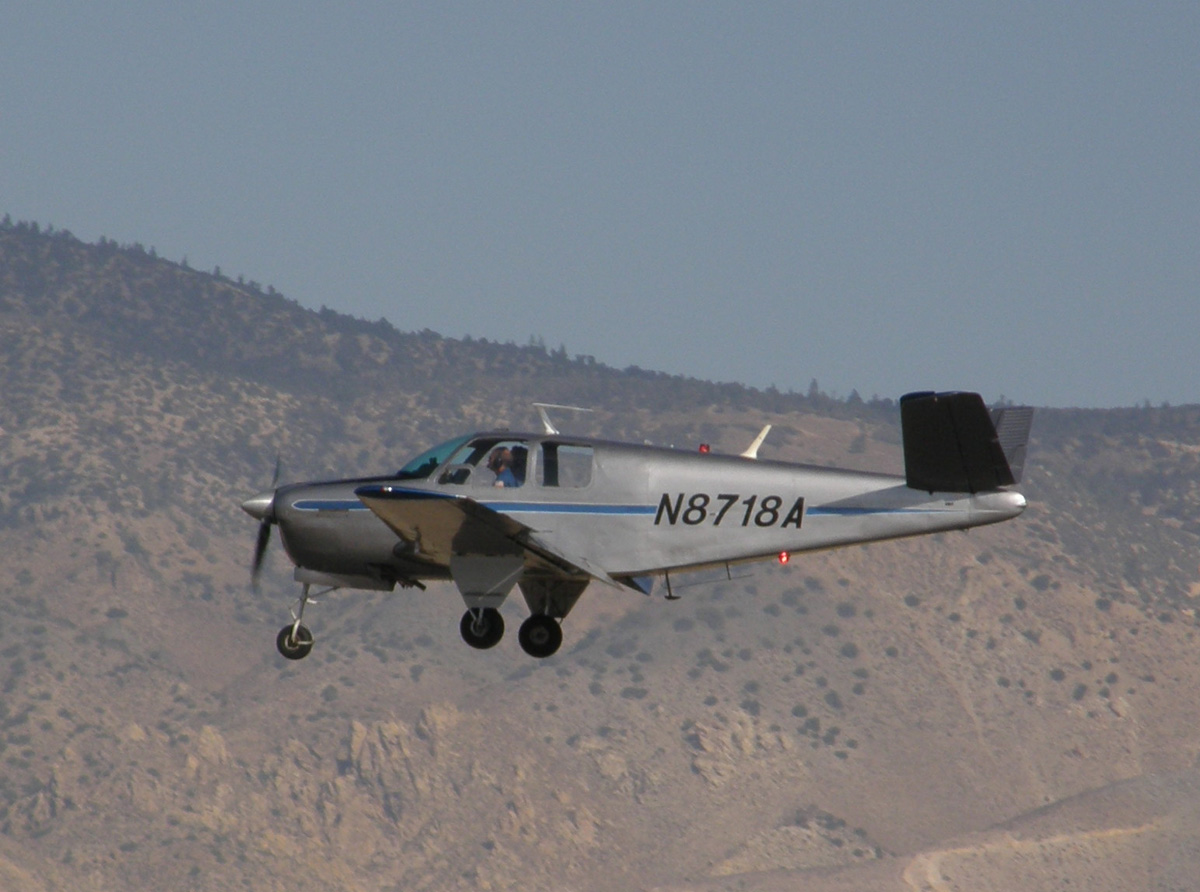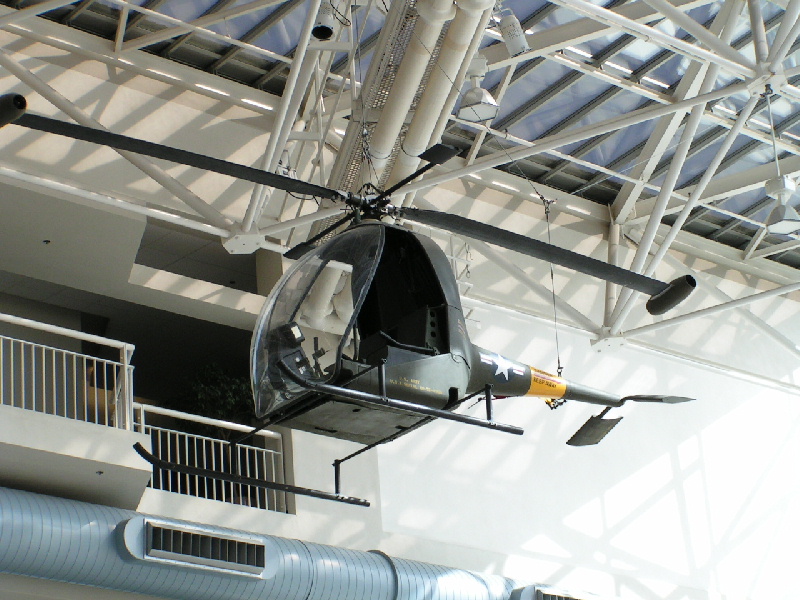|
Hughes XV-9
The Hughes XV-9 (company designation Hughes Model 385) was a 1960s American high-speed research helicopter built by Hughes Helicopters. Design and development The Model 385 was designed and built under a United States Army research contract to prove a concept known as hot-cycle propulsion. The helicopter was given the military designation XV-9A with the serial number ''64-15107''. Two General Electric YT64-GE-6 turbojets were used as gas generators, the jet efflux was ducted to nozzles at the blade tips. The rotor blades also had cooling ducts in both the leading and trailing edges. To keep costs to a minimum the cockpit with two side-by-side seats of an OH-6A was used and the landing gear was from a Sikorsky H-34. Operational service The helicopter first flew on November 5, 1964. After test flight at Hughes facility at Culver City, California, the XV-9A was transferred to Edwards Air Force Base for further tests. The tests were satisfactory and the company was confident that t ... [...More Info...] [...Related Items...] OR: [Wikipedia] [Google] [Baidu] |
WikiProject Aircraft
A WikiProject, or Wikiproject, is a Wikimedia movement affinity group for contributors with shared goals. WikiProjects are prevalent within the largest wiki, Wikipedia, and exist to varying degrees within sister projects such as Wiktionary, Wikiquote, Wikidata, and Wikisource. They also exist in different languages, and translation of articles is a form of their collaboration. During the COVID-19 pandemic, CBS News noted the role of Wikipedia's WikiProject Medicine in maintaining the accuracy of articles related to the disease. Another WikiProject that has drawn attention is WikiProject Women Scientists, which was profiled by '' Smithsonian'' for its efforts to improve coverage of women scientists which the profile noted had "helped increase the number of female scientists on Wikipedia from around 1,600 to over 5,000". On Wikipedia Some Wikipedia WikiProjects are substantial enough to engage in cooperative activities with outside organizations relevant to the field at issue. For e ... [...More Info...] [...Related Items...] OR: [Wikipedia] [Google] [Baidu] |
Hughes XH-17
The Hughes XH-17 "Flying Crane" was the first helicopter project for the Hughes Helicopters, helicopter division of Hughes Aircraft Company. The XH-17, which had a two-bladed main rotor system with a diameter of 134 feet (41 m), still holds the world record for flying with the largest rotor system. It was capable of flying at a gross weight of more than , but proved too inefficient and cumbersome to be mass-produced beyond the prototype unit. Design and development The XH-17 was a heavy-lift rotorcraft that was designed to lift loads in excess of 15 metric tons. To speed construction, parts of the XH-17 were scavenged from other aircraft. The front wheels came from a North American B-25 Mitchell and the rear wheels from a Douglas C-54 Skymaster. The fuel tank was a bomb bay-mounted unit from a Boeing B-29 Superfortress. The cockpit was from a Waco CG-15 military glider and the tail rotor from a Sikorsky H-19 Chickasaw was used for yaw control. In the late 1940s, Howard Hughes, H ... [...More Info...] [...Related Items...] OR: [Wikipedia] [Google] [Baidu] |
V-tail Aircraft
The V-tail or ''Vee-tail'' (sometimes called a butterfly tail or Rudlicki's V-tailGudmundsson S. (2013). "General Aviation Aircraft Design: Applied Methods and Procedures" (Reprint). Butterworth-Heinemann. p. 489. , 9780123973290) of an aircraft is an unconventional arrangement of the tail control surfaces that replaces the traditional fin and horizontal surfaces with two surfaces set in a V-shaped configuration. It is not widely used in aircraft design. The aft edge of each twin surface is a hinged control surface called a ruddervator, which combines the functions of both a rudder and elevator. The V-tail was invented in 1930 by Polish engineer Jerzy Rudlicki and was tested for the first time on the Hanriot H-28 trainer aircraft, modified by a Polish aerospace manufacturer Plage and Laśkiewicz in the summer of 1931. Variants The X-shaped tail surfaces of the experimental Lockheed XFV were essentially a V tail that extended both above and below the fuselage. Conventional T ... [...More Info...] [...Related Items...] OR: [Wikipedia] [Google] [Baidu] |
Hughes Aircraft
The Hughes Aircraft Company was a major American aerospace and defense contractor founded on February 14, 1934 by Howard Hughes Howard Robard Hughes Jr. (December 24, 1905 – April 5, 1976) was an American business magnate, record-setting pilot, engineer, film producer, and philanthropist, known during his lifetime as one of the most influential and richest people in th ... in Glendale, California, as a division of Hughes Tool Company. The company was known for producing, among other products, the Hughes H-4 Hercules ''Spruce Goose'' aircraft, the atmospheric entry probe carried by the Galileo (spacecraft), ''Galileo'' spacecraft, and the AIM-4 Falcon guided missile. Hughes Aircraft was founded to construct Hughes' Hughes H-1 Racer, H-1 Racer world speed record aircraft, and it later modified aircraft for his transcontinental and global circumnavigation speed record flights. The company relocated to Culver City, California, in 1940 and began manufacturing aircraft parts as a ... [...More Info...] [...Related Items...] OR: [Wikipedia] [Google] [Baidu] |
1960s United States Helicopters
Year 196 ( CXCVI) was a leap year starting on Thursday (link will display the full calendar) of the Julian calendar. At the time, it was known as the Year of the Consulship of Dexter and Messalla (or, less frequently, year 949 ''Ab urbe condita''). The denomination 196 for this year has been used since the early medieval period, when the Anno Domini calendar era became the prevalent method in Europe for naming years. Events By place Roman Empire * Emperor Septimius Severus attempts to assassinate Clodius Albinus but fails, causing Albinus to retaliate militarily. * Emperor Septimius Severus captures and sacks Byzantium; the city is rebuilt and regains its previous prosperity. * In order to assure the support of the Roman legion in Germany on his march to Rome, Clodius Albinus is declared Augustus by his army while crossing Gaul. * Hadrian's wall in Britain is partially destroyed. China * First year of the '' Jian'an era of the Chinese Han Dynasty. * Emperor Xian of ... [...More Info...] [...Related Items...] OR: [Wikipedia] [Google] [Baidu] |
1960s United States Experimental Aircraft
Year 196 ( CXCVI) was a leap year starting on Thursday (link will display the full calendar) of the Julian calendar. At the time, it was known as the Year of the Consulship of Dexter and Messalla (or, less frequently, year 949 ''Ab urbe condita''). The denomination 196 for this year has been used since the early medieval period, when the Anno Domini calendar era became the prevalent method in Europe for naming years. Events By place Roman Empire * Emperor Septimius Severus attempts to assassinate Clodius Albinus but fails, causing Albinus to retaliate militarily. * Emperor Septimius Severus captures and sacks Byzantium; the city is rebuilt and regains its previous prosperity. * In order to assure the support of the Roman legion in Germany on his march to Rome, Clodius Albinus is declared Augustus by his army while crossing Gaul. * Hadrian's wall in Britain is partially destroyed. China * First year of the '' Jian'an era of the Chinese Han Dynasty. * Emperor Xian of ... [...More Info...] [...Related Items...] OR: [Wikipedia] [Google] [Baidu] |
Tip Jet
A tip jet is a jet nozzle at the tip of some helicopter rotor blades, used to spin the rotor, much like a Catherine wheel firework. Tip jets replace the normal shaft drive and have the advantage of placing no torque on the airframe, thus not requiring the presence of a tail rotor. Some simple monocopters are composed of nothing but a single blade with a tip rocket. Tip jets can use compressed air, provided by a separate engine, to create jet thrust. Other types use a system that functions similarly to the afterburner (reheat) on a conventional jet engine, except that instead of reheating a gas jet, they serve as the primary heater, creating greater thrust than the flow of pre-compressed air alone; the best description of this is ''thrust augmentation''. Other designs includes ramjets or even a complete turbojet engine. Some, known as Rocket On Rotor systems, involve placing rockets on the tips of the rotor blades that are fueled from an onboard fuel tank. If the helicopter's ... [...More Info...] [...Related Items...] OR: [Wikipedia] [Google] [Baidu] |
General Electric T64
The General Electric T64 is a free-turbine turboshaft engine that was originally developed for use on helicopters, but which was later used on fixed-wing aircraft as well. General Electric introduced the engine in 1964. The original engine design included technical innovations such as corrosion resistant and high-temperature coatings.GE T64 page GlobalSecurity.org, accessed October 29, 2007. The engine features a high , yielding a low specific fuel consumption for its time. A ... [...More Info...] [...Related Items...] OR: [Wikipedia] [Google] [Baidu] |
WikiProject Aircraft/page Content
A WikiProject, or Wikiproject, is a Wikimedia movement affinity group for contributors with shared goals. WikiProjects are prevalent within the largest wiki, Wikipedia, and exist to varying degrees within sister projects such as Wiktionary, Wikiquote, Wikidata, and Wikisource. They also exist in different languages, and translation of articles is a form of their collaboration. During the COVID-19 pandemic, CBS News noted the role of Wikipedia's WikiProject Medicine in maintaining the accuracy of articles related to the disease. Another WikiProject that has drawn attention is WikiProject Women Scientists, which was profiled by '' Smithsonian'' for its efforts to improve coverage of women scientists which the profile noted had "helped increase the number of female scientists on Wikipedia from around 1,600 to over 5,000". On Wikipedia Some Wikipedia WikiProjects are substantial enough to engage in cooperative activities with outside organizations relevant to the field at issue. For e ... [...More Info...] [...Related Items...] OR: [Wikipedia] [Google] [Baidu] |
Hughes XV-9A Hot-cycle Propulsion Rotor Nozzle Detail
Hughes may refer to: People * Hughes (surname) * Hughes (given name) Places Antarctica * Hughes Range (Antarctica), Ross Dependency * Mount Hughes, Oates Land * Hughes Basin, Oates Land * Hughes Bay, Graham Land * Hughes Bluff, Victoria Land * Hughes Glacier, Victoria Land * Hughes Island, Victoria Land * Hughes Peninsula, Ellsworth Land * Hughes Point, Ellsworth Land Australia * Division of Hughes, an electoral district * Hughes, Australian Capital Territory, a suburb of Canberra * Hughes, Northern Territory, a rural locality United States * Hughes, Alaska, a city * Hughes, Arkansas, a city * Hughes, Iowa, a ghost town * Hughes, Wisconsin, a town * Hughes County, Oklahoma * Hughes County, South Dakota * Hughes Lake (California) * Hughes Mountain, Missouri * Hughes River (Virginia) * Hughes River (West Virginia) Other * Hughes, Santa Fe, Argentina, a town * Hughes Range (British Columbia), Canada * Hughes Reef, South China Sea * 1878 Hughes, an asteroid Businesses ... [...More Info...] [...Related Items...] OR: [Wikipedia] [Google] [Baidu] |
1965 In Aviation
This is a list of aviation-related events from 1965: Events * In the Mediterranean, the United States Navy Sixth Fleet general stores issue ship conducts what is probably the first night vertical replenishment (VERTREP) of an aircraft carrier, using the Sikorsky SH-3A Sea King antisubmarine helicopter. January * January 1 – Trans-Canada Airlines is renamed Air Canada. * January 2 – Denis Healey, the United Kingdoms Secretary of Defence, cancels the nation's fighter and military transport programmes and orders the purchase of the US-built F-4 Phantom and C-130 Hercules in their place. * January 26 – President Humberto de Alencar Castelo Branco of Brazil decides that the Brazilian Air Force henceforth will control all Brazilian fixed-wing military aircraft, including those aboard the aircraft carrier ''Minas Gerais'', and that the Brazilian Navy will control all seagoing rotary-wing aircraft. Key Brazilian naval personnel resign in protest. February * February 7 – ... [...More Info...] [...Related Items...] OR: [Wikipedia] [Google] [Baidu] |





